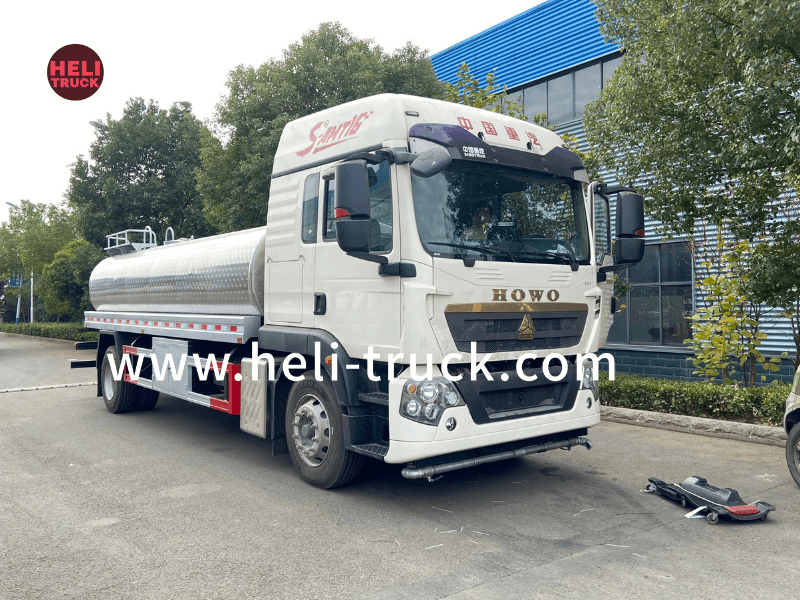Introduction
In today's fast-paced world, shopping centers play a crucial role in providing goods and services to consumers. However, with the convenience of shopping comes the responsibility of managing waste generated within these bustling hubs of commerce. Traditional waste management methods are often inefficient and unsustainable, leading to overflowing bins, unsightly litter, and environmental concerns. This is where garbage compactor trucks come into play, offering a solution that not only enhances efficiency but also promotes sustainability within shopping centers.
Understanding Garbage Compactor Trucks
Garbage compactor trucks, also known as compacting garbage trucks or compactors, are specialized vehicles designed to collect and compact solid waste efficiently. These trucks are equipped with compacting mechanisms that compress the collected waste, reducing its volume and allowing for more waste to be transported in each trip. This not only saves time and labor but also minimizes the frequency of waste collection, leading to cost savings and reduced carbon emissions.
Benefits of Garbage Compactor Trucks for Shopping Centers
1. Increased Efficiency: Garbage compactor trucks are designed to handle large volumes of waste, making them ideal for busy shopping centers with high waste generation. By compacting the waste on-site, these trucks can make fewer trips to disposal sites, saving time and resources for shopping center management.
2. Improved Hygiene: Overflowing bins and scattered litter can pose health hazards and detract from the shopping experience. Garbage compactor trucks help maintain cleanliness and hygiene within shopping centers by containing and compacting waste effectively, reducing the risk of pests and odors.
3. Space Optimization: Shopping centers often have limited space for waste storage and collection. Garbage compactor trucks enable efficient waste management by compacting the waste, reducing its volume, and maximizing the use of available space. This is especially beneficial for shopping centers located in urban areas where space is at a premium.
4. Environmental Sustainability: By reducing the volume of waste and optimizing collection routes, garbage compactor trucks contribute to environmental sustainability. These trucks help minimize the carbon footprint of waste management operations, leading to lower emissions and a greener shopping center environment.
5. Cost Savings: Efficient waste management is not only beneficial for the environment but also for the bottom line of shopping centers. Garbage compactor trucks can help reduce operational costs associated with waste collection, transportation, and disposal. By maximizing the capacity of each trip and minimizing the frequency of collections, shopping centers can save on labor, fuel, and disposal fees.
Implementation of Garbage Compactor Trucks in Shopping Centers
Integrating garbage compactor trucks into the waste management system of shopping centers requires careful planning and coordination. Here are some key steps for successful implementation:
1. Assess Waste Generation: Before introducing garbage compactor trucks, shopping center management should conduct a thorough assessment of waste generation patterns. This includes identifying peak hours, waste composition, and areas of high waste accumulation within the shopping center.
2. Select Appropriate Truck Size: Garbage compactor trucks come in various sizes and capacities to suit different needs. Shopping centers should choose a truck size that aligns with their waste generation volume and collection frequency to maximize efficiency.
3. Train Staff: Proper training is essential for the safe and effective operation of garbage compactor trucks. Shopping here are the findings for waste management should receive training on operating the trucks, safety protocols, and maintenance procedures.
4. Establish Collection Routes: Designing optimized collection routes is crucial for maximizing the efficiency of garbage compactor trucks. Shopping center management should map out collection points, schedules, and routes to ensure timely and systematic waste collection.
5. Monitor and Evaluate Performance: Continuous monitoring and evaluation of the garbage compactor truck system are essential for identifying areas of improvement. Shopping centers should track key performance indicators such as waste volume, collection frequency, and operational costs to measure the effectiveness of the system.
Case Studies: Success Stories of Garbage Compactor Truck Implementation
1. Green Mall: A shopping center in a bustling urban area implemented garbage compactor trucks as part of its waste management strategy. By compacting waste on-site and optimizing collection routes, the shopping center reduced waste collection frequency by 50% and saved over 30% in operational costs within the first year of implementation.
2. Eco-Friendly Plaza: Another shopping center embraced sustainability by introducing solar-powered garbage compactor trucks to reduce carbon emissions. The compactors were equipped with sensors to optimize waste compaction and route planning, leading to a 20% reduction in fuel consumption and a significant decrease in greenhouse gas emissions.

3. Smart Shopping Center: A tech-savvy shopping center leveraged IoT (Internet of Things) technology to enhance the efficiency of its garbage compactor trucks. Real-time monitoring and data analytics enabled the shopping center to optimize waste collection schedules, reduce idle time, and improve overall waste management performance.
Conclusion
Garbage compactor trucks offer a sustainable and efficient solution for managing waste in shopping centers. By compacting waste on-site, maximizing collection capacity, and reducing operational costs, these specialized vehicles help shopping centers enhance cleanliness, hygiene, and environmental sustainability. With proper planning, training, and monitoring, garbage compactor trucks can transform waste management practices within shopping centers, making them cleaner, greener, and more efficient for both shoppers and the environment.
